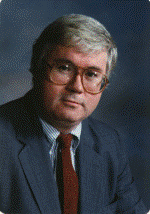Since its establishment in 1986, the Division of Occupational and Environmental Medicine has worked to prevent and manage occupational and environmental disease and related disability through clinical services delivery, employer consultation, worker training and translational research.
The interdisciplinary field of occupational health addresses problems at the intersection of health and work. The specialty of Occupational Medicine is organized under the American Board of Preventive Medicine, and addresses the effect of work hazards on health, but also the impact of health problems on the ability to work. The division’s interdisciplinary team includes occupational medicine physicians, occupational health nurses, toxicologists, biostatisticians and research assistants. We also collaborate with adjunct faculty with expertise in nursing, ergonomics, the safety sciences, industrial hygiene and personal protective technology and equipment.


Our History
The division has its roots in a program founded by James P. Keogh, MD, who was a tireless advocate for worker safety and health. Dr. Keogh died in June 1999 at the age of 49. His earliest work in academic medicine identified dimethylaminopropionitrile as the causal agent in an outbreak of bladder neuropathy in the 1970s. Dr. Keogh was able to make this determination because he took their complaints seriously and applied clear public health principles to his investigation. Throughout his life, he listened carefully to workers, characterized hazards and diseases, and then fearlessly worked to identify compensation for the individual and prevention strategies for others. Dr. Keogh was instrumental in the inclusion of construction workers in the Maryland Occupational Safety and Health lead standard, a full decade before the Federal standard did the same. He was a leading medical educator who always focused on the need to incorporate clinical compassion with public health prevention. His most outstanding legacy, however, was his fierce determination to put knowledge into practice to benefit the worker.
